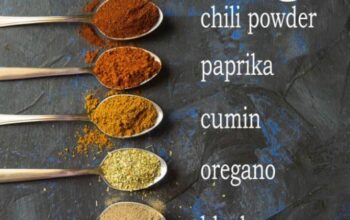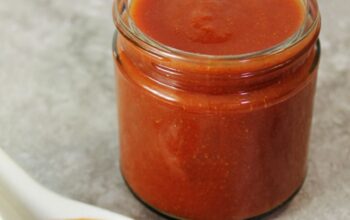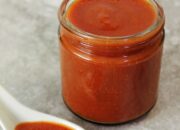Fermentation Fun: Dive into the World of Sauerkraut!
Welcome to the wonderful world of sauerkraut! If you’re a fan of tangy, crunchy, and probiotic-rich foods, then you’re in for a treat. Sauerkraut is a traditional fermented cabbage dish that not only tastes delicious but also offers a myriad of health benefits. In this article, we’ll explore the art of making Homemade sauerkraut and dive into the fascinating process of fermentation.
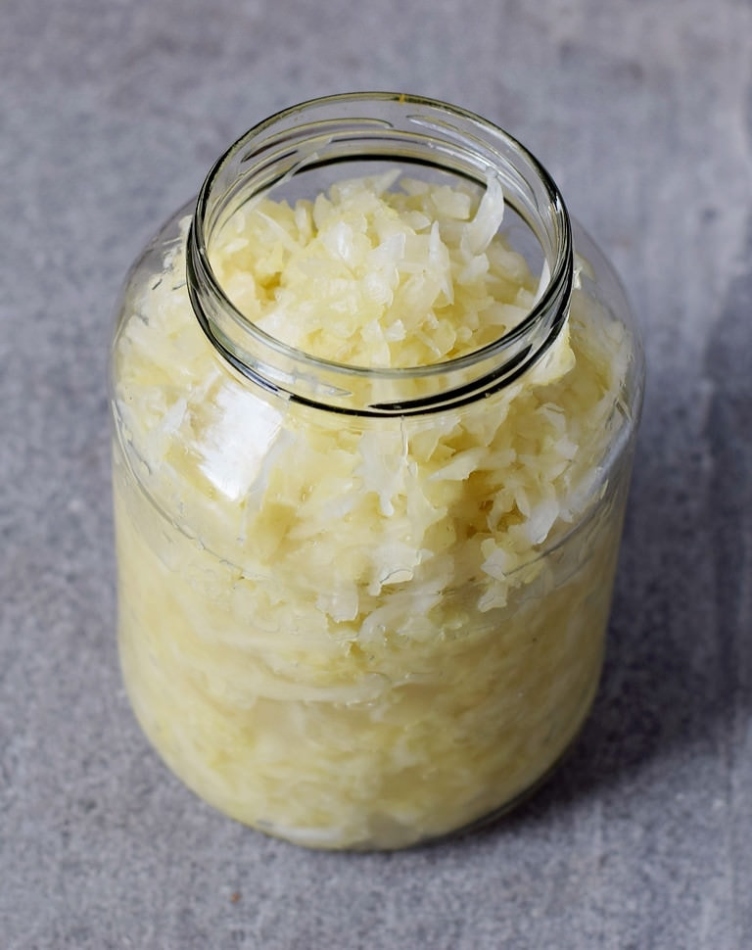
Image Source: elavegan.com
The beauty of sauerkraut lies in its simplicity. All you need are three ingredients: cabbage, salt, and time. The process of making sauerkraut involves finely shredding cabbage, mixing it with salt, and then allowing it to ferment for a period of time. During the fermentation process, beneficial bacteria begin to break down the sugars in the cabbage, creating a tangy and flavorful dish.
But sauerkraut is more than just a tasty side dish – it’s also incredibly good for you. The fermentation process not only enhances the flavor of the cabbage but also boosts its nutritional value. Sauerkraut is rich in vitamins C and K, as well as beneficial probiotics that support gut health. Eating sauerkraut regularly can help improve digestion, boost immunity, and promote overall well-being.
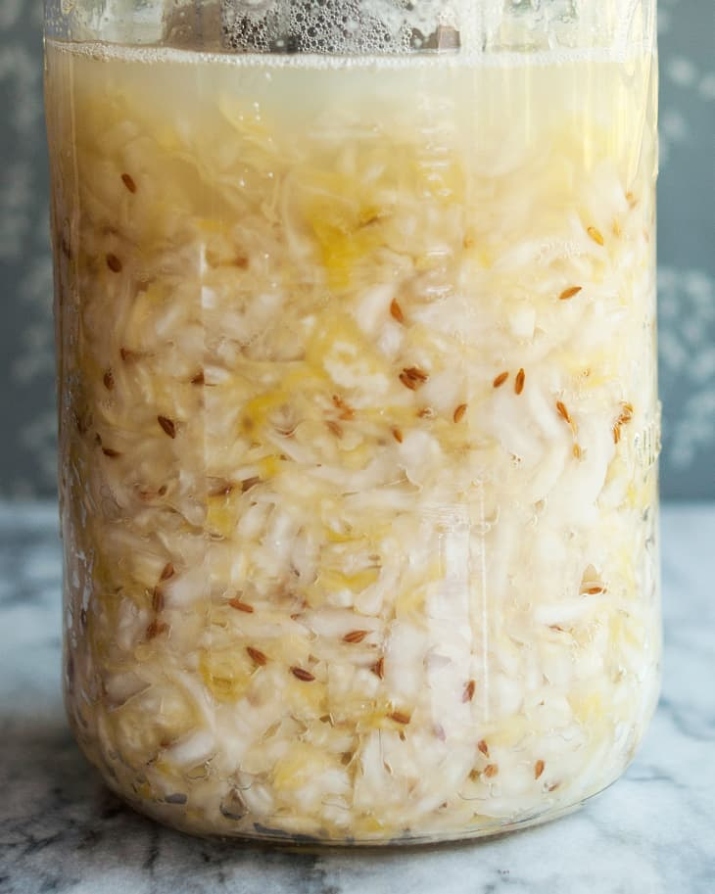
Image Source: apartmenttherapy.info
Making your own sauerkraut at home is a fun and rewarding experience. It allows you to experiment with different flavors and ingredients, and tailor the Recipes-ideas/’>Recipe to suit your taste preferences. You can add herbs, spices, and even other vegetables to create unique and flavorful variations of this classic dish.
One of the best things about making sauerkraut is that it doesn’t require any fancy equipment or special skills. All you need is a large bowl, a sharp knife, a cutting board, and a few jars for fermenting. The process is simple and straightforward, making it accessible to beginners and experienced fermenters alike.
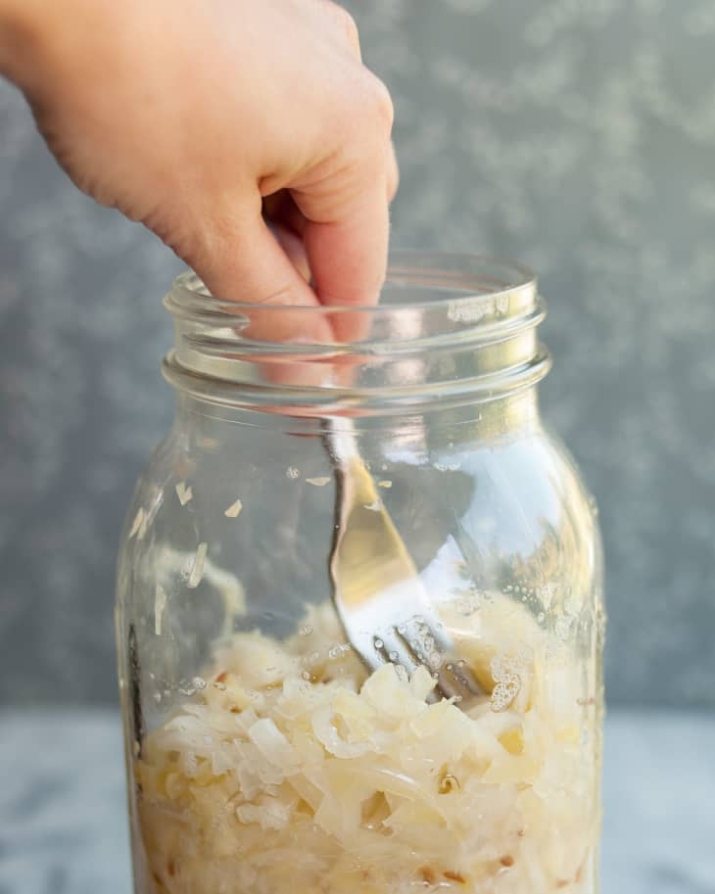
Image Source: apartmenttherapy.info
To get started, simply shred your cabbage, mix it with salt, and pack it into a jar. Make sure to press down the cabbage to release any air bubbles and ensure that it’s fully submerged in its own juices. Cover the jar with a lid or a cloth and allow it to ferment at room temperature for a few days to a few weeks, depending on your desired level of tanginess.
As your sauerkraut ferments, you’ll notice bubbles forming and a tangy aroma developing. This is a sign that the beneficial bacteria are hard at work, transforming the cabbage into a flavorful and nutritious treat. You can taste your sauerkraut periodically to check on its progress and adjust the fermentation time to suit your palate.
Once your sauerkraut is ready, you can enjoy it on its own as a side dish, add it to salads, sandwiches, or even use it as a topping for hot dogs and burgers. The possibilities are endless when it comes to incorporating sauerkraut into your meals, so don’t be afraid to get creative in the kitchen.
So why not dive into the world of sauerkraut and start fermenting your own delicious Homemade batch? Not only will you enjoy the process of creating something from scratch, but you’ll also reap the rewards of a flavorful and nutrient-rich dish that will enhance your culinary repertoire. Fermentation fun awaits – happy kraut crafting!
Savor the Flavor: Master the Art of Homemade Kraut
Kraut Kitchen: Crafting Your Own Delicious Homemade Sauerkraut
Savor the Flavor: Master the Art of Homemade Kraut
Are you ready to embark on a culinary adventure in your own kitchen? Look no further than homemade sauerkraut – a tangy and flavorful fermented delight that is surprisingly easy to make. With just a few simple ingredients and a bit of patience, you can create a delicious condiment that will elevate any meal.
When it comes to homemade sauerkraut, the possibilities are endless. You can customize the flavors to suit your tastes, adding in ingredients like caraway seeds, garlic, or even apples for a unique twist. The fermentation process allows the flavors to meld together, creating a complex and satisfying condiment that is perfect for topping hot dogs, sandwiches, or eating straight from the jar.
The key to mastering the art of homemade kraut lies in the fermentation process. By allowing the cabbage to ferment naturally, you are not only preserving its nutrients but also enhancing its flavor profile. The beneficial bacteria present in sauerkraut are great for your gut health, making this a delicious and nutritious addition to your diet.
So, how do you get started on your homemade kraut adventure? It’s simpler than you might think. All you need is a head of cabbage, some salt, and a large jar or crock to ferment it in. Simply shred the cabbage, mix it with salt, and pack it tightly into your container. Let it sit at room temperature for a few days to a few weeks, tasting along the way until it reaches the desired level of tanginess.
As you wait for your kraut to ferment, you will be able to witness the magic of transformation firsthand. The cabbage will soften and release its juices, creating a brine that will help to preserve it during the fermentation process. The flavors will deepen and develop over time, resulting in a tangy and delicious kraut that is truly a labor of love.
Once your kraut is ready, the real fun begins. You can enjoy it on its own as a side dish, or get creative with how you use it in your cooking. Add it to sandwiches or salads for a burst of flavor, or incorporate it into Recipes-ideas/’>Recipes like pierogies or sauerkraut soup for a taste of traditional European cuisine.
Homemade sauerkraut is not only delicious but also a great way to connect with your food on a deeper level. By crafting your own kraut in your kitchen, you are taking control of what goes into your food and creating something that is truly unique to your tastes. So why not give it a try and savor the flavor of homemade kraut today?
Kitchen Magic: Transform Cabbage into Tangy Delight
Welcome to the world of kraut kitchen magic, where you can transform a simple head of cabbage into a tangy delight that will tantalize your taste buds and impress your friends and family. Sauerkraut, a traditional fermented cabbage dish, has been enjoyed for centuries for its unique flavor and numerous health benefits. In this article, we will explore the process of crafting your own delicious Homemade sauerkraut and how you can infuse it with your own creative flair.
The magic of kraut kitchen begins with the humble cabbage. Cabbage, a versatile and nutritious vegetable, is the star ingredient in sauerkraut. When combined with salt and fermented, cabbage undergoes a transformation that results in a tangy, crunchy, and probiotic-rich dish that is perfect for adding a zing to any meal.
To start your kraut kitchen magic, you will need a head of cabbage, some salt, and a large glass jar or fermenting crock. Begin by slicing the cabbage thinly, either by hand or with a food processor, and adding it to a large bowl. Sprinkle salt over the cabbage and massage it in, allowing the salt to draw out the natural juices of the cabbage. This process, known as salting, helps to break down the cabbage and create the brine needed for fermentation.
Once the cabbage has been salted and massaged, pack it tightly into your glass jar or fermenting crock, making sure to press down firmly to eliminate any air pockets. The cabbage should be submerged in its own brine, which will protect it from harmful bacteria and allow the beneficial lactobacillus bacteria to thrive. Cover the jar with a lid or a cloth secured with a rubber band to keep out any contaminants while still allowing gases to escape during fermentation.
Now comes the waiting game – the magic of fermentation. Place your jar in a cool, dark place and let nature work its magic. Over the next few days or weeks, depending on your desired level of fermentation, the cabbage will transform into sauerkraut as the lactobacillus bacteria convert the sugars in the cabbage into lactic acid. This process not only gives sauerkraut its tangy flavor but also creates a host of beneficial probiotics that are great for your gut health.
While traditional sauerkraut is simply cabbage and salt, the beauty of kraut kitchen magic lies in the endless possibilities for creativity and experimentation. You can add a variety of spices, herbs, fruits, or vegetables to your sauerkraut to create unique flavor combinations that suit your taste preferences. Whether you prefer a classic dill and garlic sauerkraut or a spicy kimchi-inspired version, the only limit is your imagination.
Once your sauerkraut has reached your desired level of fermentation, it’s time to enjoy the fruits of your labor. Scoop out a generous portion of sauerkraut and add it to sandwiches, salads, tacos, or even enjoy it as a side dish on its own. The tangy flavor and crunchy texture of Homemade sauerkraut are sure to elevate any meal and impress your friends and family with your kraut kitchen prowess.
In conclusion, kraut kitchen magic allows you to transform a simple head of cabbage into a tangy delight that is not only delicious but also packed with probiotics and health benefits. By following the simple steps of salting, fermenting, and experimenting with flavors, you can create your own homemade sauerkraut that reflects your unique taste and style. So, roll up your sleeves, grab a head of cabbage, and let the magic of kraut kitchen take you on a culinary journey of fermentation fun and flavorful delights.
DIY Kraut Kitchen: Create Your Own Fermented Bliss
Welcome to the wonderful world of Homemade sauerkraut! If you’re a fan of tangy, flavorful foods and enjoy experimenting in the kitchen, then creating your own fermented bliss is the perfect project for you. With just a few simple ingredients and a bit of patience, you can craft delicious sauerkraut that will rival anything you can buy at the store.
The beauty of DIY kraut kitchen is that you have full control over the ingredients and the fermentation process. You can customize your sauerkraut to suit your taste preferences, adding different spices, herbs, and vegetables to create a unique flavor profile. Plus, fermenting your own kraut allows you to enjoy the amazing health benefits of probiotics and enzymes that come from the fermentation process.
To get started on your DIY kraut kitchen adventure, you’ll need some basic equipment, including a large mixing bowl, a sharp knife, a cutting board, and a couple of wide-mouthed glass jars. You’ll also need a head of cabbage, some salt, and any other flavorings you’d like to add to your kraut.
The first step in creating your own fermented bliss is to shred the cabbage. You can do this by hand with a sharp knife, or use a food processor with a shredding attachment for a quicker and more uniform result. Once the cabbage is shredded, place it in a large mixing bowl and sprinkle it with salt. The salt will help to draw out the moisture from the cabbage, creating the brine that is essential for the fermentation process.
Next, it’s time to get creative with your flavorings. You can add all sorts of ingredients to your sauerkraut to give it a unique twist. Some popular options include caraway seeds, garlic, ginger, turmeric, and jalapenos. Feel free to experiment and find the flavor combinations that you love.
Once you’ve mixed in your flavorings, pack the cabbage mixture into your glass jars, pressing it down firmly to remove any air bubbles. Make sure the cabbage is completely submerged in the brine, as exposure to air can cause mold to form on the surface of the kraut. If necessary, add a bit of water to ensure that the cabbage is fully covered.
Now comes the waiting game. Place your jars of kraut in a cool, dark place and let them ferment for at least a week. The longer you let the kraut ferment, the tangier and more complex the flavor will become. Be sure to check on your kraut periodically, tasting it to see how it’s progressing and skimming off any scum that may form on the surface.
Once your kraut has reached the desired level of fermentation, transfer it to the refrigerator to slow down the fermentation process. Your Homemade sauerkraut will keep for several months in the fridge, allowing you to enjoy its delicious flavor and health benefits whenever you please.
In conclusion, creating your own fermented bliss in the form of homemade sauerkraut is a fun and rewarding experience. With just a few simple ingredients and a bit of patience, you can craft delicious kraut that will impress your friends and family. So don your apron, roll up your sleeves, and get ready to dive into the world of DIY kraut kitchen!
how to make homemade sauerkraut


